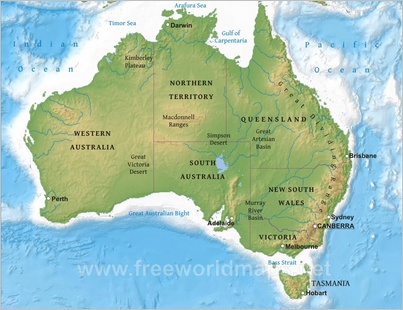





© Bart Everts

 |
 |
 |
 |
 |


| The Atherton tablelands rise from the coast just west of Cairns to about 600m altitude. As a result the climate is much more agreeable with less of the sweltering humid heat of the coast. Birdingwise it’s a hotspot with boasting all 12 tropical northern Queensland endemics. Moreover, it’s home to several endemic marsupials and plant species. Unfortunately much of the rainforest has been cleared for farming, but the pockets that remain are well protected and make it relatively easy to locate most of the endemic species. We stayed in the highly recommendable Chambers wildlife lodges close to Lake Eacham. The accommodation is located in the middle of the rainforest and several of the endemic birds, including Victoria’s riflebird, and marsupials, such as striped possum, are easily spotted on the premises. In addition, it’s centrally located which made it easy for us to explore towns and reserves nearby. For instance, just a couple of minutes away was Yungaburra a quaint little town, well known for its platypus sightings in the creek that runs through town. One night we booked a spotlighting tour with Alan Gillanders, a very enthousiastic naturalist, who gave us great advise on where to find the hard-to-find endemics Golden Bowerbird and Lumholtz tree Kangaroo. This area was one of the highlights of our Australian vacation. |

| Close to Lampang is one of the most authentic elephant training centers of Thailand: The Elephant Conservation Center. The center has a longstanding tradition in training wild Asian elephants to carry, push and pull logs in the timber industry in an animal friendly way (based on reward in stead of punishment). Of course there are shows in which they show their skills and there is the possibility to take a very enjoyable ride on their back for about half an hour. However, just as interesting are the factory where they make ecologically friendly paper from elephant dung and the only elephant hospital in the world where disabled elephants, due to for instance land mines, are treated and rehabilitated. We went there on a day trip van Chiang Mai and it is highly recommendable when you are even just a bit interested in these big friendly animals. |

| Chiang Mai is the tourist capital of the north and for good reason. The city itself is small enough to feel quickly acquainted, but also big enough to find everything you need. Chiang Mai harbours some very pretty temples of which the one on Doi Suthep, the mountain overlooking the city, is both in location and splendour, the most interesting one. Furthermore, for real shopaholics Chiang Mai is a shopping heaven with many markets, including the famous night markets. Moreover, lots of courses like Thai language, cooking and massage are available at virtually every street corner. With cheap food and accomodation it's a fantastic place to stay a longer time. In addition, Chiang Mai is also a perfect starting point for an exploration of the northern region: Elephant camps, orchid farms and beautiful national parks with pretty waterfalls are within 2 hours distance. We stayed for 6 days in a small hotel, Villa Oranje, with a very friendly staff, from where we made several trips to sites in and outside the city. |
 |
 |
| Physical activities: eg Walking / Rafting / swimming Nature: eg National Park / Reserve City / Cultural site |
 |
 |
 |
 |
 |
 |

| This National park is one of the most popular Parks in Australia. It is a peninsula surrounded by ocean and occupies the most southern piece of Australian mainland. It has many beautiful beaches, mountains covered in heath and forest, great hiking trails and lots of wildlife including kangaroos, Emus and Wombats. We didn’t stay in the park itself but stayed in one of the B&B’s close by, because of the enormous popularity of the park. |

| The first stop of our visit to Australia was Rianne's Cousin and family who live in Canberra. We spent about 5 days there to recover from the jetlag and to catch up. As a result we with didn't get to see much of Canberra itself apart from the Botanical gardens. |

| The werribee treatment plant is famous among birders and is considered one of the best places in Australia for birdwatching, especially for water-associated birds the area consists of a large number of freshwater reservoirs surrounded by reeds, marshes and grasslands. We hired a highly recommendable guide, Steve from ‘the Melbourne birder’ , who spotted around 80 birdspecies for us in less than 4 hours of birding. A wonderful place and we can highly recommend visiting this place with this guide. |

| This area was hit hard by the 2011 cyclone Yasi, but we wanted to go there for the beaches, and to catch a glimpse of the Southern Cassowary, one of the most enigmatic birds of Australia. Mission Beach area is one of the last stronghold of the bird (apparently there are only 38 individuals in the area). We did get to see both. For a sighting of the cassowary we didn’t even have to leave our bungalow: a female crossed right in front of our cabin!! We also did a daytrip to Dunk Island which was fun with nice beaches and hiking. |

| We spent the last couple of days of our vacation in Sydney. We really enjoyed Sydney. Its harbor front is beautiful with the opera house, harbour bridge and the botanical gardens. We didn’t get much further than the harbor and downtown, but that was enough to get a taste of the city. We decided not to stay in Sydney itself but in Manly, a beach town on the northern shoreline of Sydney Harbour. This turned out to be an excellent choice: To get into Sydney we had to take a ferry, which gave spectacular views of the the skyline and Opera House. |

| If you expect the Australian alps to be similar to the Alps is Europe you will be disappointed. The Australian ones are much older and as such less high an far more eroded without sharp peaks and pinnacles. Nonetheless drivng the great Alpine Road that corsses the mountain ranges is still well worth it. Great views, lots of different scenery and many places to stop for a hike or picnic. |

| Somewhere halfway Melbourne and Sydney lies Chiltern, This place is particularly wellknown amongst birders as its National Park protects one of the last tracks of box-ironbark forest which is home to large variety of unique birds, including the critically endangered regent honeyeater. We did not see these bird, but many other honeyeaters that, retrospectively, didn’ t see anywhere else. |

 |

 |





 |


